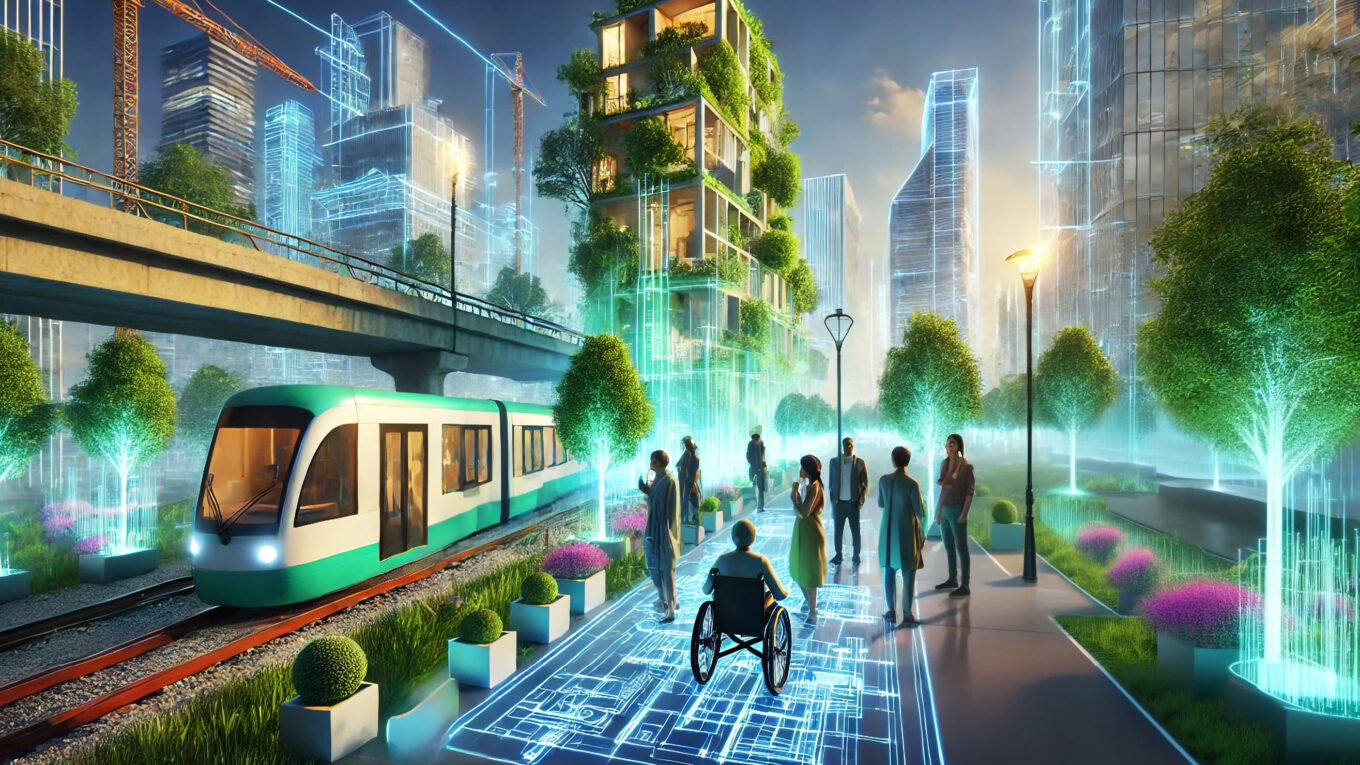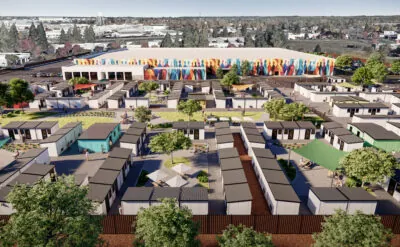Each October, also known as Archtober, World Architecture Day invites us to reflect on the vital role architecture and architects as agents of change play in shaping our cities and communities. This year’s theme, “Empowering the next generation to participate in urban design,” highlights the essential contribution of young architects to urban transformation and underscores the importance of empowering them to address the challenges of our time.
Young architects and designers contribute significantly to shaping solutions that address urgent urban issues like climate change, housing affordability and inequality. Through participatory urban design, they rethink urban spaces and engage diverse communities—often confronting the very challenges they aim to solve. These efforts to improve the quality of urban life are creating more sustainable, inclusive and resilient environments for present and future generations.
At the forefront is the need for sustainable practices in urban design, focusing on key issues such as energy efficiency, waste management, sustainable materials and urban mobility. Young architects are driving many of these conversations, proposing new solutions that promote urban growth in environmentally and socially sustainable ways. With creativity and fresh perspectives, they are revitalizing the urban fabric and transforming communities, collaborating with experienced architects who provide mentorship and guidance. Discover where this generation sees opportunities for impact and how they envision the future of our cities.
Rethinking Sustainability Through Preservation
“We can’t talk about sustainability anymore without talking about embodied carbon reduction. I think we’re going to see a lot less new construction from the next generation of architecture professionals. A focus on improving the efficiency of what we have balanced with preserving the heritage of our existing architecture will likely be the new norm.”
—Cyle Sheppard, Designer, Sustainability
Sustainability remains a central concern in urban design, particularly as cities strive to reduce their carbon footprints. This conversation includes rethinking how existing structures are utilized and how to make our cities cool again to adapt to the climate crisis. While net-zero buildings, passive energy strategies and green infrastructure are beneficial, young architects recognize that sustainability is not solely about new buildings, materials and technologies. It is also about valuing and preserving heritage architecture. By collaborating with seasoned professionals and learning from the past, they create solutions that honor historical contexts while paving the way for a sustainable future.
Advocating for Sustainable Urban Mobility
“As a recent graduate, sustainable design in our built environment is always at the forefront of my mind. Designing for dense, mixed-use and integrated urban environments not only enhances the social foundation of communities but also reduces carbon emissions by designing for walkability, bike-ability and mass transit.”
—Mackintyre Garber, Designer, Commercial
Designing for sustainable urban mobility is critical in creating environmentally responsible and livable cities. Young architects emphasize that integrated, mixed-use and transit-oriented urban environments not only reduce carbon emissions but also promote healthier, more connected communities. By designing for compact walkable neighborhoods, they aim to reduce reliance on cars and fossil fuels, aligning with broader climate goals and urban regeneration strategies.
Incorporating these mobility solutions into urban design has a ripple effect on community well-being, as it promotes equitable access to resources and services. Young architects are committed to transforming cities into vibrant spaces that prioritize people and mass transit, ultimately enhancing the vitality of urban life while reducing urban sprawl.
Driving Inclusivity in Urban Design
“Designing for tomorrow means addressing the unique challenges of our cities and prioritizing equitable access, innovation and human-centered design. Empowering the next generation, for example in healthcare, requires delivering spaces that not only promote healing but also foster connection and serve as a model for a more inclusive future that support the vibrancy of our cities.”
—Ali Khaja, Intern Architect, Health Sciences
Empowering the next generation to champion inclusive design is essential for evolving urban landscapes that address the critical needs of people and the planet. Young architects are a driving force in expanding the scope of diversity and inclusivity in urban spaces, focusing on creating accessible and equitable environments that cater to various communities, including marginalized groups and Indigenous voices. Their commitment to community-driven design underscores their role in amplifying diverse perspectives in the planning process.
Leveraging technology such as virtual reality in immersive design processes equips this new generation of architects with tools to engage effectively with communities, fostering responsive planning and design solutions. This transparent, engaging and collaborative approach encourages a sense of ownership and belonging, uplifting individuals and nurturing socially sustainable and livable urban environments.
Shaping the Future of Urban Design
“The next generation of architects has a passionate appreciation for sustainable design and urban growth and are ready to make substantial changes in the world. Teaming up these keen young talents with experienced architects will promote a new realm of environmentally and economically sustainable design. This is especially relevant in the world of urban transit design where airports, rail stations, bus depots and other transportation hubs are the backbone of any city. There is no limit to what the next generation can achieve given the opportunity and guidance.”
—Stacy Lee, Studio Manager, Transportation
As we celebrate World Architecture Day 2024, empowering young architects and designers is vital for addressing the challenges facing our cities. By fostering collaboration between seasoned architects and emerging talent, we create a robust pipeline of passionate professionals dedicated to transforming urban environments into responsive, resilient and sustainable places.



